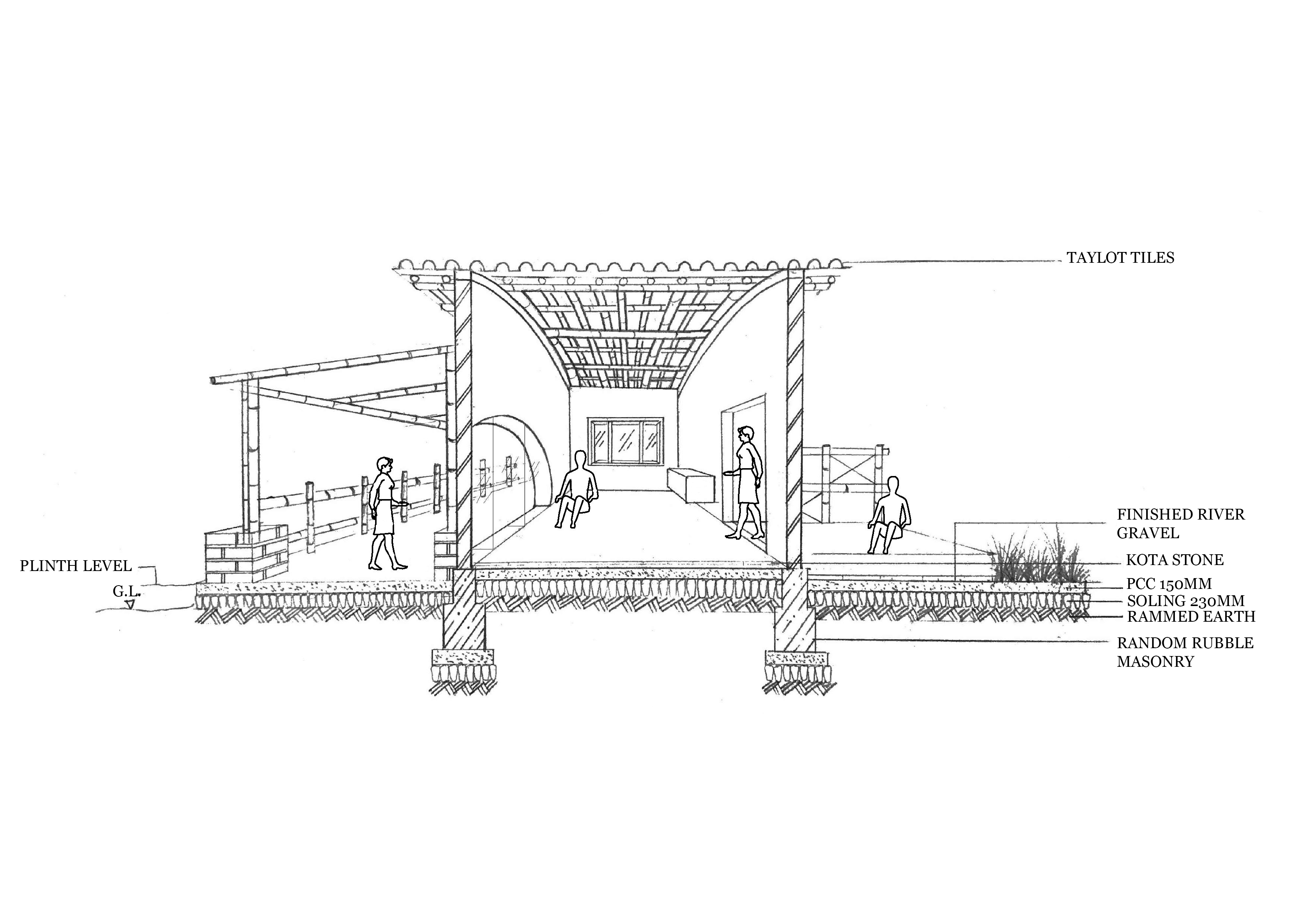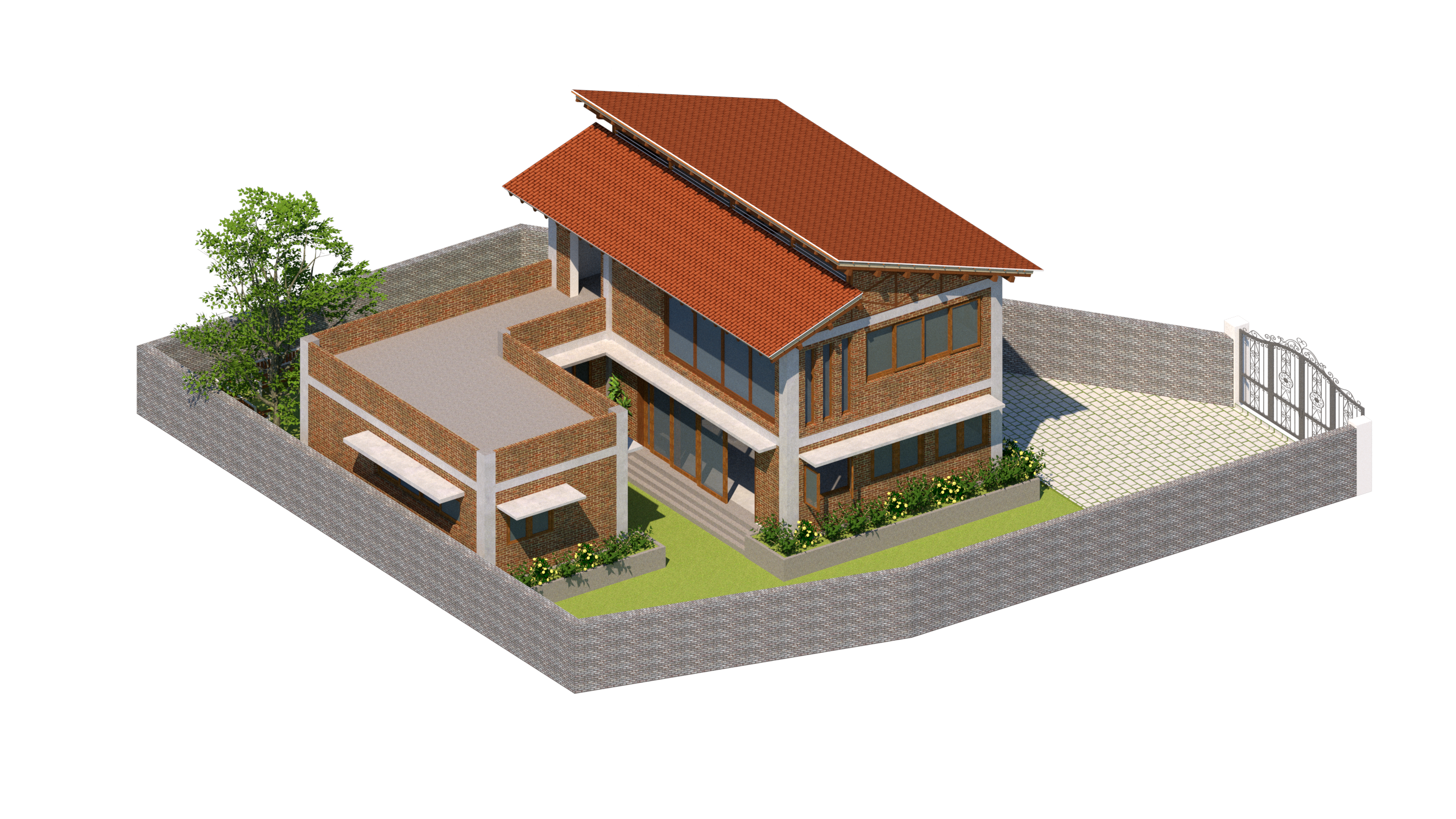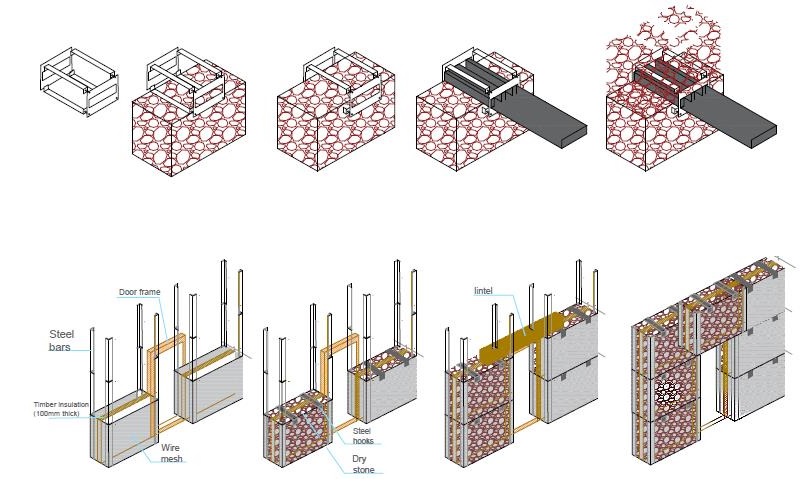
Prajwal Deshmukh, Dishita Galchat
Sem 03 | Technology
Composite Construction: Solar Passive House
The semester III technology studio asks the following question as a deeper interrogation in the realm of technology, construction, environment and space making - How to develop composite built-form that enables relevant negotiations between environmental flows (light and air) and different habitation practices. The studio explores the composite constructions in two ways,
- It refers to two load-carrying structural members that are integrally connected and deflect as a single unit . For example, a metal deck with concrete fill and steel filler beams, a bamboo wall with mud filling and lime plaster.
- It also refers to two or more materials coming together to act as one building element.For example, a window made of timber frame and glass panels.
This studio engages with rethinking and reenvisioning the making of a small scale house of approximately 150sqm in different climatic contexts of India. Even though the climatic classifications and their characteristics are available at hand, the dynamism experienced on an everyday basis from natural flows like air, water, light and heat is distinctly similar. It also depends upon the user, and the inhabitation methods through spatial appropriation. So then how does one design for varying conditions of climate and how does the built create comfort conditions for its users also becomes central.
The question starts with deliberating the two dominant practices, 1. traditional architecture; where building with local materials becomes a given and 2. Green Building architecture, where it promises technological aids like double glass units to provide thermal comfort by claiming it to be energy efficient. So which is more appropriate and more justified? The studio engages to learn from both and arrive at informed decisions that suggest more embeddedness of the culture as well as the social context of the site, users and the community. For eg, the slate stone which was traditionally used in the construction of houses in Uttarakhand is no more available as its use is banned due to unethical mining practices and hence the locals are now required to think of alternative material and construction methods.
The students chose the climatic context that they were better familiar with and with the help of case studies understood the different ways in which the construction methods can help create an experience of the space for its users. Crafting the space based upon the user profile and hence the specific spatial needs of the user became important and central to derive the form of house.
 Nishith Parulekar
Nishith Parulekar Prajwal Deshmukh, Dishita Galchat
Prajwal Deshmukh, Dishita Galchat Sayli Zantye
Sayli Zantye

Yash Mhatre, Jainam Mehta